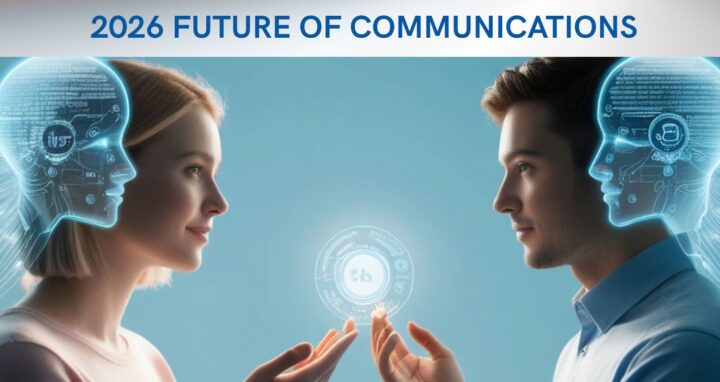This insights post is a summary of the blog post published by Keith Donovan from Airfoil Group. View the full insight at: Using Biometrics to Craft PR Campaigns That Truly Connect: A Conversation with Pioneering Researchers at GVSU.
As the lines between data and emotion continue to converge, a new era of communication strategy is emerging—one where science meets storytelling. A recent conversation between Worldcom partner Keith Donovan, CEO of Airfoil Group, and pioneering researchers at Grand Valley State University’s Advertising/Public Relations Biometrics Lab reveals how biometric research is revolutionizing the public relations industry.
At the core of this innovation is GVSU’s state-of-the-art biometrics lab, where tools like eye tracking, facial expression analysis, galvanic skin response (GSR), and heart rate monitoring provide objective, real-time insights into how people truly feel. These physiological signals reveal subconscious emotional reactions—something traditional surveys and focus groups often miss.
Moving Beyond Guesswork
In an era where biometrics can be more discreetly measured, relying solely on self-reported feedback leaves major gaps in understanding audience behavior. Biometrics offers a way to fill those gaps—tracking everything from where people look on a page to how intensely they react to a message. Eye-tracking heatmaps, facial emotion coding, and even emotional “sweat” help PR professionals fine-tune messaging for maximum resonance.
Students at GVSU are already applying this technology to real-world campaigns, particularly targeting Gen Z. Their takeaway? Gen Z demands authenticity and values-driven storytelling—insights backed by physiological evidence.
Trust, Emotion, and Brand Impact
Research consistently shows that trust is built through emotional cues—not just logical arguments. Facial expression data, heart rate changes, and GSR spikes can identify moments in content that build or break that trust. For instance, purpose-driven campaigns outperform product-centric ones when it comes to emotional engagement, according to a study by Porter Novelli and Cone [1].
In PR, these signals are critical. They allow communicators to test how messages are felt, not just how they are heard—an invaluable edge in today’s cluttered media landscape.
The Road Ahead: Smarter Tools, Deeper Insight
Over the next five years, biometric technology is expected to become a staple of strategic communications. Expect to see:
- Wearable, frictionless sensors that allow real-time, scalable data collection.
- Multimodal research combining eye tracking, EEG, GSR, and facial analysis for a 360° view of audience reaction.
- AI-powered analysis to spot emotional patterns and predict campaign effectiveness.
For PR practitioners, this means building teams or partnerships that can interpret biometric data, understand emotional storytelling, and apply behavioral insights at every stage of campaign development.
Biometrics is taking the guesswork out of connection. By helping PR professionals understand what audiences really feel—beyond what they say—it’s paving the way for campaigns that not only reach people, but move them. To get more details and the full interview, read the LinkedIn article at: Using Biometrics to Craft PR Campaigns That Truly Connect: A Conversation with Pioneering Researchers at GVSU.





